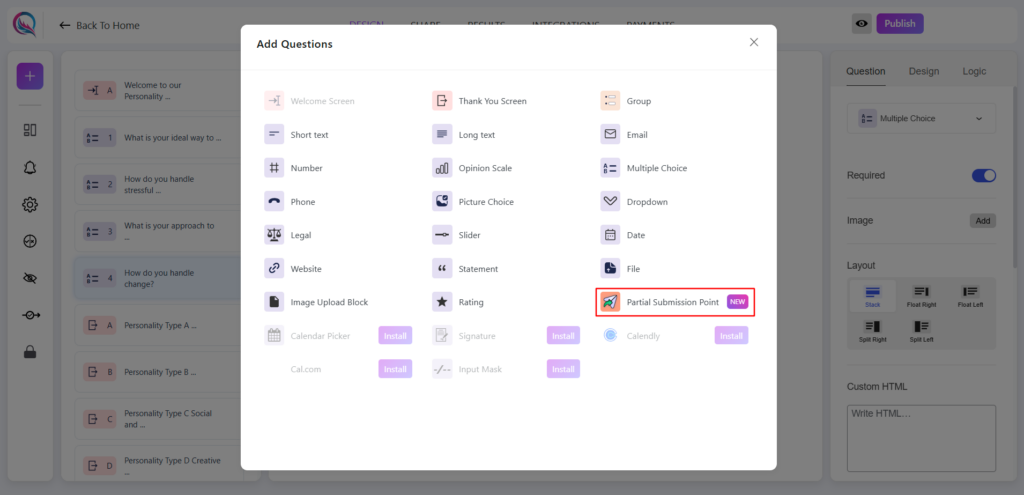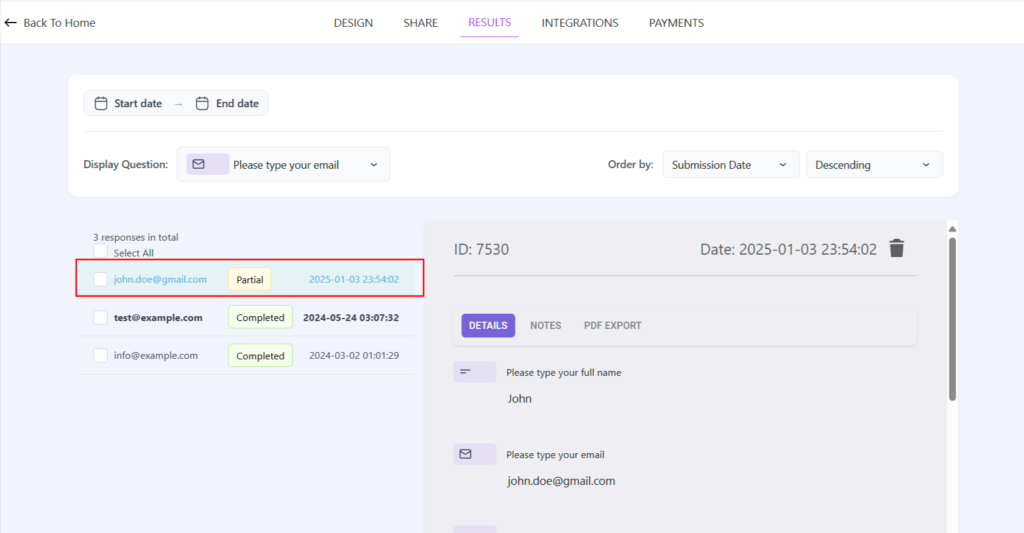Introduction
Partial response collection is a powerful feature that allows you to capture valuable data even when users don’t complete your entire form. This is particularly useful for:
- Long forms where completion rates might be lower
- Market research where partial data is still valuable
- Situations where users might need multiple sessions to complete a form
- Progressive data collection in multi-step processes
How Partial Response Collection Works
Setting Up Partial Submission Points
- Open your form in the form builder
- Locate the Partial Submission Point element in the builder

- Drag and drop it between any two blocks in your form
- Important: The partial submission point cannot be placed:
- Before the first field.
- After the last field.
- Inside any group block.
- It must be positioned between form blocks
Functionality
When a respondent reaches a partial submission point:
- All responses before this point are automatically saved
- The data is stored securely in your form’s database
- Responses are marked with a “partial” label in your results

- Users can continue with the rest of the form
Best Practices for Using Partial Submissions
Strategic Placement
- Place partial submission points after logical form sections
- Consider adding them after important information is collected
- Use them before sections that might require user research or consultation
Data Analysis
- Partial responses are clearly marked in your results tab
- Use these insights to:
- Identify where users commonly drop off
- Analyze completion patterns
- Make informed decisions about form structure
Privacy and Compliance Responsibilities
As a form administrator, you have important responsibilities regarding partial response collection:
Required Disclosures
You must inform your respondents that:
- Their responses will be saved before form completion
- At which points their data will be collected
- How their partial responses will be used
Privacy Considerations
Your responsibilities include:
- Adding appropriate notices about partial response collection at your form’s beginning
- Consulting with your legal/compliance team about this data collection method
- Ensuring your partial response collection aligns with applicable data protection regulations
- Maintaining transparency about data collection practices
- Updating your privacy policy to reflect partial response collection
Technical Recommendations
Form Setup
- Test your partial submission points thoroughly
- Ensure proper data validation before submission points
- Verify that submission notifications are configured correctly
Data Management
- Regularly review partial response data
- Implement appropriate data retention policies
- Consider how partial responses integrate with your complete response analysis
Conclusion
Partial response collection is a valuable tool for gathering important data throughout your form. However, it must be implemented thoughtfully and responsibly. As the form administrator, you are ultimately responsible for ensuring transparent communication with your users about data collection practices and maintaining compliance with relevant privacy regulations.
Additional Resources
- Form Privacy Guidelines
- Data Collection Best Practices
- User Communication Templates
- Compliance Documentation
Remember: The success of partial response collection depends on both technical implementation and clear communication with your users about data collection practices.




